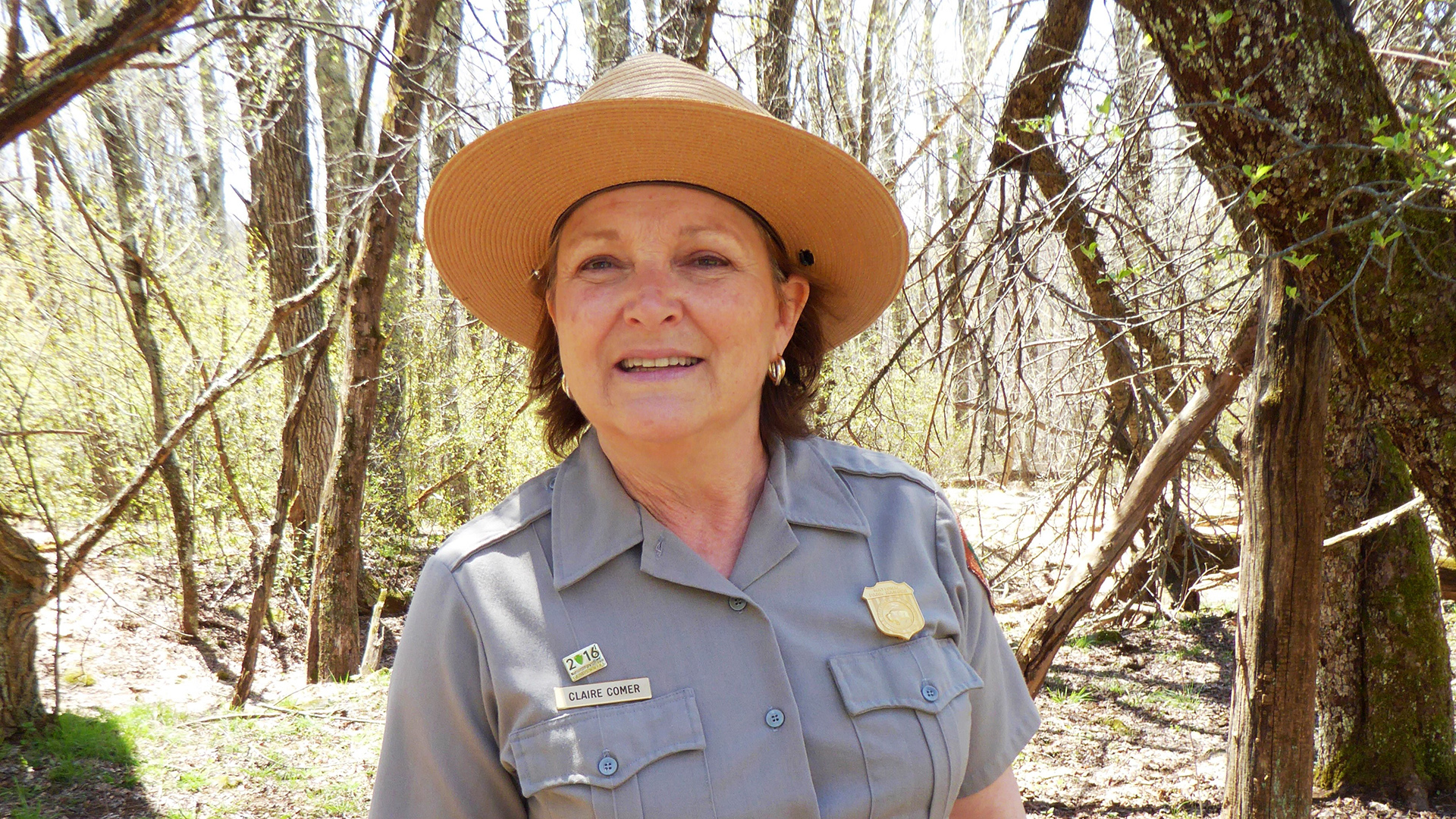
For Shenandoah National Park to become ���an Eastern park in the Western tradition”, Claire Comer’s family and more than 400 others had to sacrifice their properties.
With its rolling Blue Ridge scenery and rugged canyons, you’d never suspect that Virginia’s Shenandoah National Park is as much a work of man, as it is of nature.

But the 105-mile-long preserve, pocketed with protected wilderness areas and hiking trails, is a masquerade of sorts. For decades, its history was carefully hidden from public view.
Interpretive ranger Claire Comer knows its secrets all too well. Her ancestors settled here in 1732, venturing to the frontier of then-British America to settle the valleys and hollows on the edge of Appalachia. Over the centuries they raised crops and cattle, and, like the waterfalls that tumble along the park’s popular Whiteoak Canyon hiking trail, they became a part of the landscape.

That all began to change in the 1920s as the federal government expanded the US National Park Service. Its goal was to create “an Eastern park in the Western tradition” just 70 miles west of Washington, DC. But for that to happen in Virginia, Comer’s family and more than 400 others would have to sacrifice their properties.
“I don’t walk through here without thinking about them and wondering about them,” she said as we strolled the Appalachian Trail on a warm spring morning across what was once her great-grandfather’s land.

While the West’s marquee sites like Yellowstone and Yosemite were carved from federal property, Shenandoah had to be assembled from existing holdings. Today, as visitors explore trails like Nicholson Hollow and Rose River Loop, they unknowingly pass abandoned cemeteries, churches and schools.
I learned the land doesn’t belong to you – you belong to the land.
For half a century, managers did their best to obliterate that heritage by removing buildings and other signs of habitation, but recently the park and surrounding communities have begun to formally acknowledge what happened here. Just last November, Madison County, Virginia, dedicated a monument with the names of 123 families that surrendered their land. The other seven counties bordering the 105-mile-long park plan to do the same.

When she was growing up, Comer didn’t give these things much thought. She left for college eager to leave her tiny corner of the world behind. But she eventually found she couldn’t stay away, returning to make a home on her family’s remaining property on the Shenandoah River.
“I was drawn back. I learned the land doesn’t belong to you – you belong to the land,” she said as we continued down the trail.
A few minutes later, something caught her eye and she led me into the brush. “As soon as you see a pile of rocks which clearly show a human hand, you know you’re on a former farmstead or homestead,” she explained.

It has been years since she’s visited this area, but she thinks it may be the site of a cattle scale on her family’s former summer pasture. Poking at the vines and dirt, she soon uncovered a leather shoe, a shovel head and thick, squared pieces of broken glass.
“My great-grandfather might have used that,” she said, carefully replacing the debris, which the park service now considers cultural artefacts.

Comer helped shift attitudes when she joined the park service 28 years ago. In her early years as a ranger, she searched archives and interviewed the displaced. She recalls visiting with someone who had attended school in a hollow that had since been reclaimed by forest. The old woman looked at the woods and into the past, pointing to the place where her former teacher and classmates had sat. “I wish there was the technology to see what she was seeing,” Comer said.
Ultimately, the ranger’s work led to the surprisingly frank history exhibition that now greets guests at the park’s Harry F Byrd Sr. Visitor Center. The multimedia display notes how local promotors and politicians stretched the truth by falsely calling the proposed parkland pristine and uninhabited. “The exhibit is brutally honest,” Comer said. “We didn’t want to interpret. We just wanted to lay it out.”

Comer doesn’t question the history, though. The park, she notes, sees more than one million visitors a year, offering easy access to nature for residents of the mid-Atlantic’s urban centres. “I think about what would have happened if the park wasn’t here. This would be completely developed,” she said, waving a hand toward the misty hills on the horizon. “At the end of the day, in 2016, that we have Shenandoah National Park is a great thing.”
If you liked this story, sign up for the weekly bbc.com features newsletter, called “If You Only Read 6 Things This Week”. A handpicked selection of stories from BBC Future, Earth, Culture, Capital, Travel and Autos, delivered to your inbox every Friday.